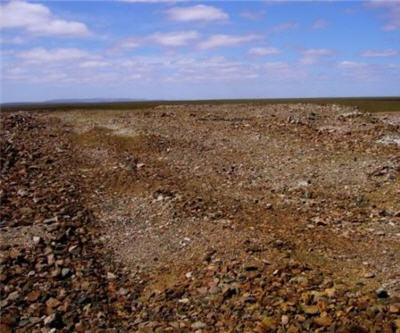South Africa could play a key role in world rare earth supplies
By Trevor Blench, Chairman of Steenkampskraal Holdings, which owns the Steenkampskraal rare earths mine in the Western Cape, South Africa

Steenkampskraal REE Mine South Africa
Manufacturers of products ranging from batteries to electronic devices, and wind turbines to hybrid cars, are scouring the world to secure critical supplies of rare earths such as neodymium, praseodymium and dysprosium.
The increasing applications of rare earths in key industries, which include smartphones, are fuelling worldwide demand and raising the prices of some rare earths.
The Steenkampskraal mine in the Western Cape province of South Africa has the highest grades of rare earth elements in the world and with this South Africa hopes to become a significant supplier of rare earths in world markets.
The mine plans to establish a supply chain of its highly-sought-after rare earths to manufacturers around the world. Some manufacturers see the supply so critical that they have indicated interest in buying a share of the mine to secure supplies.
The rare earths known as neodymium, praseodymium and dysprosium make up about 85% of the economic value at the Steenkampskraal mine. These are key rare earth elements used in the manufacture of permanent magnets that go into most electric motors in the world.
More than half the economic value of the Steenkampskraal mine ore is in neodymium, followed by around 20% in praseodymium and 10% in dysprosium. In 2015, China produced about 80% of the global rare earths output.
Neodymium and praseodymium form the basis of neodymium-iron-boron (NdFeB) magnets. The addition of dysprosium enables these magnets to operate at high temperatures. These magnets are used in numerous products ranging from miniature speakers in smart phones to wind turbines.
NdFeB enables smaller, lighter and more powerful magnets to be manufactured for defense weapon systems. Neodymium magnets are also key components in electric cars and make appliances like air conditioners far more energy efficient. LED lighting relies on yttrium, cerium and other rare earths.
Most people have no idea about the components in smartphones. Yttrium and praseodymium are what make smartphones so small, powerful and bright. In the defence industry, rare earths are vital in laser, radar, sonar, night-vision systems, missile guidance, smart bombs, jet engines, and even the alloys on armoured vehicles.
Some manufacturers, as well as some countries, are indicating concern over China’s dominance of these strategic resources. The concentration of rare earths production in China raises the question of supply vulnerability.
Because rare earths are used for so many commercial applications, the US, Japan, Europe and other countries could be vulnerable to supply disruptions. Rare earths are considered essential to a country’s national security and economic well-being.
The Steenkampskraal mine has great value and economic potential. The mine’s rare earths basket, based on present prices, is about US$15.84 per kilo of separated rare earth oxides. The cost of the mine’s production is estimated at US$9.64 per kilo of separated rare earths. Gross profit is estimated at US$6.20 per kilo.
With these prices and volumes, the company would have a total sales value of about US$43 million per year, a total cost of about US$26 million per year and a gross profit around US$17 million per year.
Steenkampskraal presently has a Mineral Resource Estimate of 605,000 tons of ore with an average grade of 14.4% Total Rare Earth Oxides (TREO) for a total of 86,900 tons of contained TREO.
{{ commodity.name }}
{{ post.title }}
{{ post.date }}




Comments